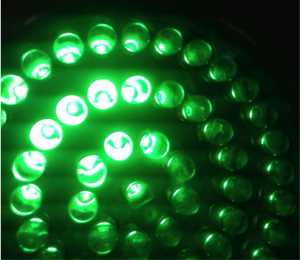February 15, 2015
Getting the Green Light
February 15, 2015
If you love incandescent lights, you may feel the demise of Edison’s claim to fame is a shame. The 100 watt bulb was the first to go in 2012, followed by the 75 watt bulb in 2013, and finally the most popular 40 and 60 watt bulbs are no longer being manufactured in 2014.
While many refer to this as a ban, it’s really a phase-out as a result of the Energy Independence and Security Act of 2007. In anticipation of the change, many stores stocked up on this soon-to-be keepsake, perhaps coddling those who can’t live without their fire-in-glass lighting. Staunch advocates include decorators, artists and others who insist that there is no match for a burning filament to produce natural light. In fact, there are still a number of exceptions to allow these purists to continue using incandescents.
In fact, the color of both LED (light-emitting diode) and CFL (compact-fluorescent lamp) lights have been improved to mimic the soft, warm glow of the old incandescents. Color “temperature” is measured on the Kelvin (K) scale, with incandescents and halogens on the warmer end at 2,700-3,000 K. The earliest LEDs and CFLs had a much cooler light, with color temps topping 5,000 K or more. These days, both of these lamps can be purchased in a wide color range, and stores like Home Depot offer comparisons to allow customers to see the difference in color.
The measure of light brightness was long measured in watts, but that’s actually the amount of energy the bulb “burns.” Incandescents indeedburnenergy – with 90% of the energy wasted as heat and only 10% harnessed as light! The new standard islumens,which is a means by which to compare the efficiency of lights. For example, a traditional 60W incandescent bulb uses 60 watts to produce 800 lumens , while a CFL only uses only 13-16 watts to produce the same output, and an LED only 10-12 watts.
While energy efficiency is a big selling point, the bigger savings comes in replacement costs. The 60W incandescent bulb may only cost $1, but it is only designed to last about 1,200 hours – or about a year if you turn it on 3-4 hours a day every day. By contrast, a $2 CFL will last 10,000 hours and a $15 LED lamp will last 25,000 hours or more! So you’d need to buy 20 incandescents over a 20 year period, but only three CFLs and only one LED.
The price of LEDs have dropped dramatically in the last few years, yet from a pure cost-savings standpont they are not necessarily the best value. However, they perform better on “instant starting” and don’t have a warm-up period like some of the less expensive CFLs. Most LEDs are also dimmable, while CFLs are generally not unless you pay a lot for the lamp, and even then they often flicker at lower levels. LEDs are great for bulbs that are hard to change, like high ceilings or parking lot lights, because there is a greatly reduced cost of maintenance (or headache if it’s just your home!) CFLs also contain trace amounts of mercury, and therefore must be properly disposed.
The new Energy Labeling Rule makes it easy to compare light bulbs (see sample Lighting Facts label). Like nutritional labels on food packaging, these are designed to help consumers make better choices when shopping for bulbs. Inhabitant.com offers a helpful guide to encourage people to make the switch.
So whether you’re puttin’ on the green for St. Patrick’s Day, or looking for green lights on your way home, take a look at a your lights and make the greener choice!







